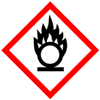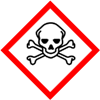CAS Number 7722-84-1, Hydrogen Peroxide BP Ph Eur USP Analytical Reagent FCC Food Grade Manufacturers Exporters


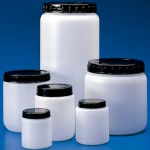
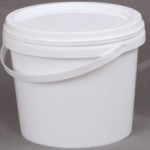
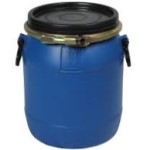
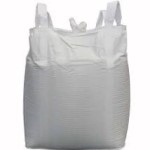
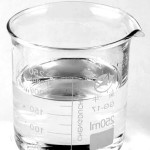
CAS Number 7722-84-1, Hydrogen Peroxide BP Ph Eur USP Analytical Reagent FCC Food Grade Manufacturer Exporter
For Properties Specifications of Hydrogen Peroxide Click Properties, Specifications of Hydrogen Peroxide Manufacturer.
For Uses of Hydrogen Peroxide Click Uses of Hydrogen Peroxide Manufacturer.
For For SDS MSDS Sheet of Hydrogen Peroxide Click SDS Safety Data Sheet MSDS Sheet of Hydrogen Peroxide Manufacturer.
The Properties and Specifications of Hydrogen Peroxide:
Specifications of Hydrogen Peroxide 30%
Stability, 24 hours @ 100C: >96%
Loss in assay, 1 year @ 25C: <0.7%
Active oxygen content: 16.5%
Specific gravity: 1.13
Boiling point: 108 C.
Freezing point: -33 C.
Specifications of Hydrogen Peroxide 50%
Stability, 24 hours @ 100C: >96%
Loss in assay, 1 year @ 25C: <1%
Active oxygen content: 23.5%
Specific gravity: 1.20
Boiling point: 114 C.
Freezing point: -52 C.
Specifications of Hydrogen Peroxide 60%
Stability, 24 hours @ 100C: >96%
Loss in assay, 1 year @ 25C: <1.2%
Active oxygen content: 28.2%
Specific gravity: 1.24
Boiling point: 120C.
Freezing point: -46C.
Hydrogen Peroxide Topical Solution USP Grade Specifications
H2O2 --- 34.01 --- [CAS 7722-84-1].
Hydrogen Peroxide Topical Solution contains, in each 100 mL, not less than 2.5 g and not more than 3.5 g of H2O2. It contains not more than 0.05 percent of a suitable preservative or preservatives.
Packaging and storage: Preserve in tight, light-resistant containers, at controlled room temperature.
Identification: Shake 1 mL with 10 mL of water containing 1 drop of 2 N sulfuric acid, and add 2 mL of ether: the subsequent addition of a drop of potassium dichromate produces an evanescent blue color in the water layer which upon agitation and standing passes into the ether layer.
Acidity: To 25 mL add phenolphthalein, and titrate with 0.10 N sodium hydroxide: not more than 2.5 mL is required for neutralization.
Barium: To 10 mL add two drops of 2 N sulfuric acid: no turbidity or precipitate is produced within 10 minutes.
Heavy metals: Dilute 4 mL, previously shaken, with 20 mL of water, add 2 mL of 6 N ammonium hydroxide, and gently boil the solution until the volume is reduced to about 5 mL Dilute with water to 25 mL: the limit is 5 ppm.
Limit of nonvolatile residue: Evaporate 20 mL, previously shaken, on a steam bath to dryness, and dry the residue at 105C for 1 hour: the weight of the residue does not exceed 30 mg.
Limit of preservative: Extract 100 mL of well-mixed Topical Solution in a separator with a mixture of 3 volumes of chloroform and 2 volumes of ether, using 50 mL, 25 mL, and 25 mL, respectively. Evaporate the combined extracts at room temperature in a tared glass dish to dryness, and dry over silica gel for 2 hours: the residue, if any, weighs not more than 50 mg (0.05%).
Assay: Pipet 2 mL of Topical Solution into a suitable flask containing 20 mL of water. Add 20 mL of 2 N sulfuric acid, and titrate with 0.1 N potassium permanganate. Each mL of 0.1 N potassium permanganate is equivalent to 1.701 mg of H2O2.
Hydrogen Peroxide Concentrate USP Grade Specifications
H2O2 --- 34.01 --- [CAS 7722-84-1].
Hydrogen Peroxide Concentrate contains not less than 29.0 percent and not more than 32.0 percent, by weight, of H2O2. It contains not more than 0.05 percent of a suitable preservative or preservatives.
Acidity: Dilute 25 g with water to 250 mL, and mix thoroughly. Take 25 mL of the solution, add phenolphthalein, and titrate with 0.10 N sodium hydroxide: not more than 2.5 mL is required for neutralization.
Chloride: 1.5 g diluted with water to 25 mL shows no more chloride than 0.10 mL of 0.020 N hydrochloric acid (0.005%).
Other requirements: It responds to the Identification test and meets the requirements of the tests for Nonvolatile residue, Heavy metals, and Limit of preservative (90 mL of it being used) under Hydrogen Peroxide Topical Solution.
Assay: Accurately weigh about 1 mL of Concentrate in a tared 100-mL volumetric flask, dilute with water to volume, and mix. To 20.0 mL of this solution add 20 mL of 2 N sulfuric acid, and titrate with 0.1 N potassium permanganate VS. Each mL of 0.1 N potassium permanganate is equivalent to 1.701 mg of H2O2.
Hydrogen Peroxide Solution (30 per cent) BP Ph Eur Grade Specifications
Ph. Eur. --- CAS 7722-84-1
Action and use: Antiseptic; deodorant.
DEFINITION
Content: 29.0 per cent m/m to 31.0 per cent m/m of H2O2.
1 volume of hydrogen peroxyde solution (30 per cent) corresponds to about 110 times its volume of oxygen. A suitable stabiliser may be added.
CHARACTERS
Appearance: Colourless, clear liquid.
IDENTIFICATION
A. To 1 mL add 0.2 mL of dilute sulfuric acid and 0.25 mL of 0.02 M potassium permanganate. The solution becomes colourless with evolution of gas.
B. To 0.05 mL add 2 mL of dilute sulfuric acid, 2 mL of ether and 0.05 mL of potassium chromate solution and shake. The ether layer is blue.
C. It complies with the requirement for the content of H2O2.
TESTS
Acidity: To 10 mL add 100 mL of water and 0.25 mL of methyl red solution. Not less than 0.05 mL and not more than 0.5 mL of 0.1 M sodium hydroxide is required to change the colour of the indicator.
Organic stabilisers: Maximum 500 ppm.
Shake 20 mL with 10 mL of chloroform R and then with 2 quantities, each of 5 mL, of chloroform R. Evaporate the combined chloroform layers under reduced pressure at a temperature not exceeding 25C and dry in a desiccator. The residue weighs a maximum of 10 mg.
Non-volatile residue: Maximum 2 g/L.
Allow 10 mL to stand in a platinum dish until all effervescence has ceased, cooling if necessary. Evaporate to dryness on a water-bath and dry at 100-105C. The residue weighs a maximum of 20 mg.
Hydrogen Peroxide FCC Food Grade Specifications
H2O2 --- Formula weight 34.01 --- CAS: 7722-84-1
DESCRIPTION
Hydrogen Peroxide occurs as a clear, colorless liquid. The grades of Hydrogen Peroxide suitable for food use usually have a concentration between 30% and 50%. It is miscible with water.
Note: Although Hydrogen Peroxide undergoes exothermic decomposition in the presence of dirt and other foreign materials, it is safe and stable under recommended conditions of handling and storage. Information on safe handling and use may be obtained from the supplier.
Function: Bleaching, oxidizing agent; starch modifier; antimicrobial agent.
REQUIREMENTS
Identification: Shake 1 mL of sample with 10 mL of water containing 1 drop of 2 N sulfuric acid, and add 2 mL of ether. The subsequent addition of a drop of potassium dichromate produces an evanescent blue color in the water layer that upon agitation and standing passes into the ether layer.
Assay: Not less than the labeled concentration or within the range stated on the label.
Acidity: (as H2SO4) Not more than 0.03%.
Iron: Not more than 0.5 mg/kg.
Lead: Not more than 4 mg/kg.
Phosphate: Not more than 0.005%.
Residue on Evaporation: Not more than 0.006%.
Tin: Not more than 10 mg/kg.
Hydrogen Peroxide Analytical Reagent Grade Specifications
H2O2 --- Formula Wt 34.01 --- CAS Number 7722-84-1
NOTE. This reagent should be stored in a cool place in containers with a vent in the stopper. The assay requirement applies to material stored properly for a reasonable time.
REQUIREMENTS
Assay: 29.0-32.0% H2O2
MAXIMUM ALLOWABLE
Color (APHA): 10
Residue after evaporation: 0.002%
Titrable acid: 0.0006 meq/g
Chloride (Cl): 3 ppm
Nitrate (NO3): 2 ppm
Phosphate (PO4): 2 ppm
Sulfate (SO4): 5 ppm
Ammonium (NH4): 5 ppm
Heavy metals (as Pb): 1 ppm
Iron (Fe): 0.5 ppm.
The Uses of Hydrogen Peroxide:
Hydrogen Peroxide is used as an oxidizer, bleaching agent and antiseptic. It is the most friendly oxidizer, environmentally and chemically. The common Grades are Hydrogen Peroxide 30%, Hydrogen Peroxide 50% and Hydrogen Peroxide 60%. Very rarely, a user may need higher percentage like 70%.
The MSDS-SDS Hazard Statement of Hydrogen Peroxide:
Hydrogen Peroxide SDS, Safety Data Sheet
MSDS Sheet, Material Safety Data Sheet 03-May-25
Section 1. Product Information
Product Name & Other Names: Hydrogen Peroxide.
CAS No.: 7722-84-1
EINECS EC Number: 231-765-0
Relevant uses and uses advised against (if any): Industrial Manufacturing.
Section 2: Hazards Identification
GHS, Globally Harmonized System Classification in accordance with 29 CFR 1910
Classification according to Regulation (EC) No 1272/2008
Oxidizing liquids; oxidizing solids Category 3, H272
Acute toxicity, oral Category 3, H301
Skin corrosion/irritation Category 1A, B, C H314
Acute toxicity (inhalation) Category 4, H332
Specific target organ toxicity - single exposure, Category 3, H335
Chronic aquatic toxicity (Category 3), H412
Labeling according to GHS & Regulation (EC) No 1272/2008
GHS Label Elements 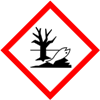 Marine Pollutant |
GHS Label Elements |
GHS Label Elements |
GHS Label Elements |
Signal Words: Danger
Hazard statements:
H272 May intensify fire; oxidizer
H301 Toxic if swallowed.
H314 Causes severe skin burns and eye damage.
H332 Harmful if inhaled
H335 May cause respiratory irritation.
H412 Harmful to aquatic life with long lasting effects.
Precautionary statements:
P202: Do not handle until all safety precautions have been read and understood.
P210: Keep away from heat/sparks/open flames/hot surfaces – No smoking.
P220: Keep/Store away from clothing/…/combustible materials.
P260: Do not breathe dust/fume/gas/mist/vapors/spray.
P270: Do not eat, drink or smoke when using this product.
P280: Wear protective gloves/protective clothing/eye protection/face protection.
P301+310: IF SWALLOWED: Immediately call a POISON CENTER or doctor/physician.
P303+361+353: IF ON SKIN (or hair): Remove/Take off immediately all contaminated clothing. Rinse skin with water/shower.
P304+340: IF INHALED: Remove victim to fresh air and keep at rest in a position comfortable for breathing.
P332+313: If skin irritation occurs: Get medical advice/attention.
P305+351+338: IF IN EYES: Rinse cautiously with water for several minutes. Remove contact lenses if present and easy to do – continue rinsing.
Other Information: Keep container in a cool place out of direct sunlight. Store only in vented containers. Avoid storing on wooden pallets. Avoid contamination - Contamination could cause decomposition and generation of oxygen which may result in possible container rupture.
Section 3: Composition and Information on Ingredients
Product Name & Other Names: Hydrogen Peroxide.
CAS No.: 7722-84-1
EINECS EC Number: 231-765-0
Percentage: >30% and <70% in water.
Section 4. First Aid & Procedure
Always get medical attention after the first aid is over.
Ingestion: Never give anything by mouth to an unconscious person. Get medical attention.
Skin: Immediately flush skin with plenty of water for at least 15 minutes. Remove and wash contaminated clothing. Get medical attention if irritation develops.
Eyes: Immediately flush eyes with plenty of water for 15 minutes, occasionally lifting upper and lower eyelids. Get medical attention.
Inhalation: Remove person to fresh air. If breathing is difficult, give oxygen. If not breathing administer artificial respiration. Get medical attention.
Hydrogen peroxide is a strong oxidant. Direct contact with the eye is likely to cause corneal damage especially if not washed immediately. Careful opthalmologic evaluation is recommended and the possibility of local corticosteroid therapy should be considered. Because of the likelihood of corrosive effects on the gastrointestinal tract after ingestion, and the unlikelihood of systemic effects, attempts at evacuating the stomach via emesis induction or gastric lavage should be avoided.
Section 5. Fire Fighting Measures
Flash Point: N/A
Fire/Explosion: The product is not combustible, but it is an oxidizer.
Extinguishing Medium: Water. Do not use any other substance.
Hazardous Combustion Products: On decomposition product releases oxygen which may intensify fire.
Fire Fighting Instructions: Use suitable protective equipment for surrounding fire.
In closed unventilated containers, risk of rupture due to the increased pressure from decomposition. Contact with combustible material may cause fire.
Special Information: In the event of a fire, wear full protective clothing and NIOSH-approved self-contained breathing apparatus with full face piece operated in the pressure demand or other positive pressure mode.
Section 6. Spills and Disposals
Personal precautions, protective equipment and emergency procedures: Avoid breathing dust/fumes/gas/mist/vapors/spray. Use individual protective equipment (waterproof boots, suitable protective clothing, safety glasses, etc.).
Environmental precautions: Do not let the product enter drains, soil or water sources.
Methods and materials used for containment Cleanup procedures and Storage: Dike to collect large liquid spills. Stop leak and contain spill if this can be done safely. Pick up and arrange disposal without creating mist/dust. Sweep up and shovel. Keep in suitable, closed containers for disposal. Avoid mist formation. Avoid breathing vapors or mist or gas. Stop leak if safe to do so. Prevent entry into waterways, drains, confined areas. Collect material and place it into loosely covered plastic containers for later disposal.
Combustible materials exposed to hydrogen peroxide should be immediately submerged in or rinsed with large amounts of water to ensure that all hydrogen peroxide is removed. Residual hydrogen peroxide that is allowed to dry (upon evaporation hydrogen peroxide can concentrate) on organic materials such as paper, fabrics, cotton, leather, wood or other combustibles can cause the material to ignite and result in fire.
Section 7. Handling and Storage
Toxic Hazardous material.
Precautions for safe handling: Avoid prolonged or repeated exposure. Apply according to good manufacturing and industrial hygiene practices. Ensure proper ventilation. Do not drink, eat or smoke while handling. Avoid contact with skin, eyes and clothing. Minimize dust generation. Avoid breathing dust/fumes/gas/mist/vapors/spray. Avoid ingestion and inhalation. Use individual protective equipment (waterproof boots, suitable protective clothing, safety glasses, etc.).
Conditions for safe storage, including any incompatibilities: Store in cool, dry and ventilated area away from heat sources and protected from sunlight in tightly closed original container. Keep air contact to a minimum. Do not leave the material container open. Store protected from heat, sparks and ignition sources and incompatible materials. Keep/Store away from clothing/ combustible materials. Isolate from all combustibles and incompatible substances. Avoid inhalation of dust/mist/vapor. Do not store with incompatible materials like organic materials, powdered metals, strong reducing agents. Hydrogen peroxide should be stored only in vented containers and transferred only in a prescribed manner.
Section 8. Exposure Controls & Personal Protection
Exposure Limits: ACGIH TLV: TWA: 1 ppm, OSHA PEL: TWA: 1 ppm & TWA: 1.4 mg/m3
Engineering Controls: Use adequate exhaust ventilation to keep airborne concentrations low.
Ventilation System: A system of local and/or general exhaust is recommended to keep employee exposures low.
Personal Respirators (NIOSH Approved): For conditions of use where exposure to dust or mist is apparent and engineering controls are not feasible, a particulate respirator may be worn.
Skin Protection: Wear protective gloves and clean body-covering clothing.
Eye Protection: Use chemical safety goggles and/or full face shield where dusting or splashing of solutions is possible. Maintain eye wash fountain and quick-drench facilities in work area.
Other Control Measures: Maintain good housekeeping in work area. Handle in accordance with good industrial hygiene and safety practice.
Section 9. Physical & Chemical Data
Appearance: Clear Colorless Liquid.
Odor: None
Odor threshold: Not applicable.
pH: Varies with assay
Specific Gravity: Varies.
Melting Point: Varies.
Initial boiling point and boiling range: No information found.
Flash point: No information found.
Auto-ignition temperature: No information found.
Decomposition temperature: No information found.
Upper/lower flammability or explosive limits: No information found.
Vapor pressure: No information found.
Vapor density: No information found.
Evaporation rate: No information found.
Flammability (solid, gas): No information found.
Partition coefficient: n-octanol/water: No information found.
Solubility: Miscible with water.
Viscosity: No information found.
Section 10. Stability and Reactivity
Chemical Stability: Stable under recommended temperatures and pressures. It is an oxidizer.
Incompatibility (Materials to Avoid): Organic materials, Powdered metals, Strong reducing agents.
Conditions to Avoid: Incompatible materials, excessive heat and light.
Hazardous Decomposition Products: Oxygen that supports combustion.
Hazardous Polymerization: Unlikely not occur.
Section 11. Toxicological Information
Toxicity to Animals:
LD50 Oral 50% solution: LD50 > 225 mg/kg bw (rat)
LD50 Oral 35 % solution:LD50 1193 mg/kg bw (rat)
LD50 Oral 70 % solution: LD50 1026 mg/kg bw (rat)
Carcinogenicity: IARC: 3- Group 3: Not classifiable as to its carcinogenicity to humans (Hydrogen peroxide).
Teratogenic Effects: No information found.
Mutagenic Effects: No information found.
Developmental Toxicity: No information found.
Reproductive Effects: No information found.
Section 12. Ecological Information
Ecotoxicity: Very toxic to aquatic organisms, may cause long-term adverse effects in the aquatic environment.
Toxicity to fish: LC50 semi-static test Pimephales promelas: 16.4 mg/l / 96 h.
Toxicity to daphnia and other aquatic invertebrates: EC50 semi-static test Daphnia pulex: 2.4 mg/l / 48 h
Results of PBT and vPvB assessment: This substance/mixture contains no components considered to be either persistent, bioaccumulative and toxic (PBT), or very persistent and very bioaccumulative (vPvB) at levels of 0.1% or higher.
Persistence and Degradability: Unlikely to persist due to water solubility.
Mobility: Mobile due to water solubility.
Section 13. Disposal Suggestions
Dispose of in accordance with all applicable local, state and federal regulations at an approved waste disposal facility.
Section 14. Transport and Label Information
Land Transport DOT USA, TDG Canada & ADR/RID Europe:
UN number: 2014 Class: 5.1 (8) Packing group: II
Proper shipping name: HYDROGEN PEROXIDE, AQUEOUS SOLUTION
Sea Transport IMDG/IMO:
UN number: 2014 Class: 5.1 (8) Packing group: II
Proper shipping name: HYDROGEN PEROXIDE, AQUEOUS SOLUTION
Air Transport IATA/ICAO:
UN number: 2014 Class: 5.1 (8) Packing group: II
Proper shipping name: HYDROGEN PEROXIDE, AQUEOUS SOLUTION
Section 15. Regulatory Information
USA:
SARA 311/312 Hazards: Aquatic hazard. Chronic hazard. See section 2.
California Prop. 65 Components: Not listed.
Section 16. Other Information
DISCLAIMER: The information and recommendations set forth herein are presented in good faith and believed correct as of the date hereof. It is compiled from various sources, and it is not necessarily all inclusive nor fully adequate in every circumstance. In addition, these suggestions should not be confused with nor followed in violation of applicable laws, regulations, rules, or insurance requirements applicable. This SDS MSDS sheet is intended only as a guide to the appropriate precautionary handling of the material by a professionally trained person using this product. Individuals receiving the information must exercise their independent judgment in determining its appropriateness for a particular purpose. This shall not constitute a guarantee for any specific product features and shall not establish a legally valid contractual relationship. In no case shall our company be liable to loss or damages by the product user.
Anmol Chemicals & Pharmaceuticals Pvt. Ltd. is an off-shoot of Anmol Chemicals Taloja. It is located in MIDC Taloja and it is manufacturing pharmaceutical grades of API, Excepients, Food grade and Reagent grade chemicals. Anmol Chemicals & Pharmaceuticals Pvt. Ltd. is a several decades old group of companies, engaged in manufacturing, supplying, distributing, wholesale supplies for actual users, retail or small pack supplies for research and development chemicals, fine and speciality chemicals, pharmaceutical excipients, mineral fortifiers in chemically pure, Analytical reagent grade, IP BP USP Ph Eur EP JP and other pharmaceutical grade monograph including FCC Food grade chemicals and Nutraceuticals, Mineral Fortifiers at best prices.
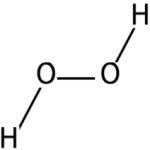
Hydrogen Peroxide Structure
CAS Number 7722-84-1, Hydrogen Peroxide Manufacturer Exporter
ANMOL CHEMICALS & PHARMACEUTICALS Pvt. Ltd.
India, USA, Europe, UAE
TELEPHONE: +912223770100
Navi Mumbai, INDIA
e-mail: info(At the rate i.e. @)anmol.org
Copyright. 3-may-25
We manufacture:
Carbamide Peroxide or Urea Hydrogen Peroxide
Fumed Silica or Colloidal Silicon Dioxide



